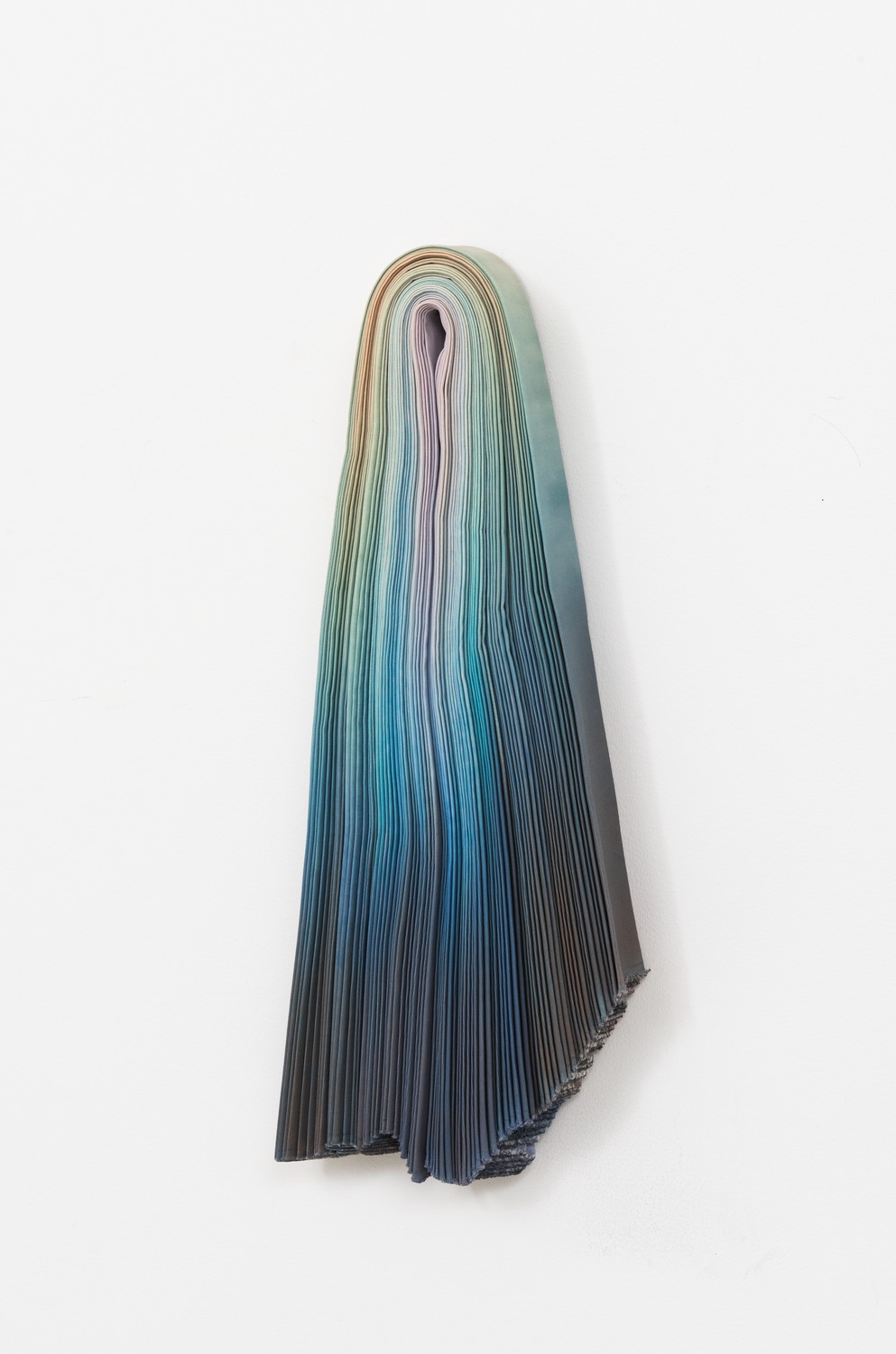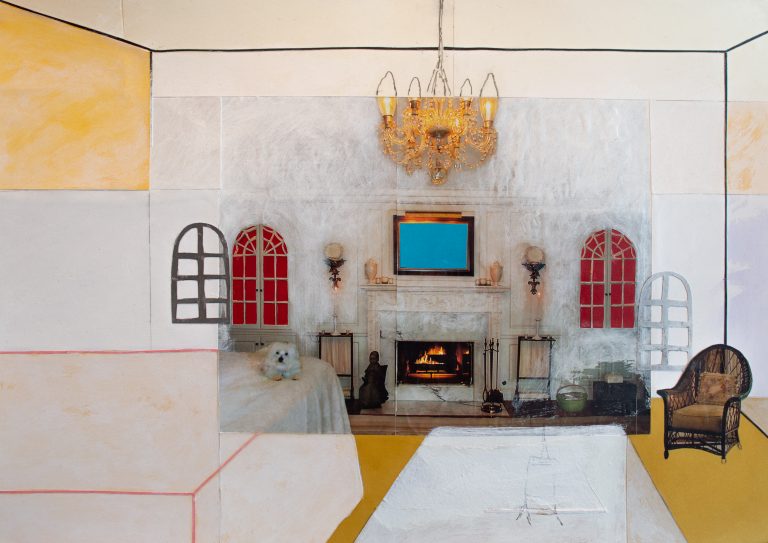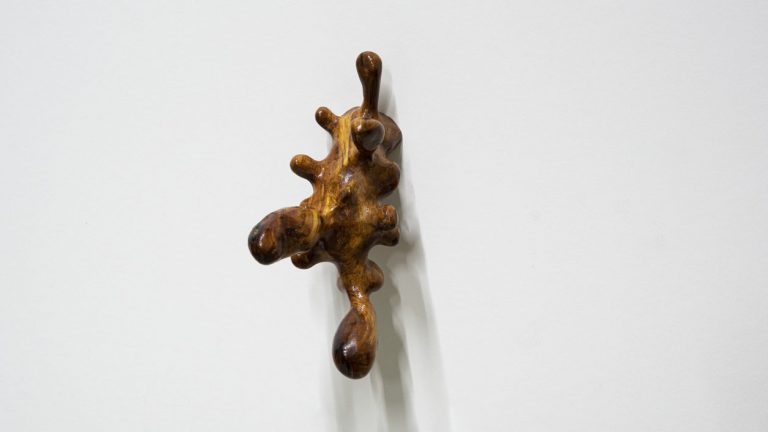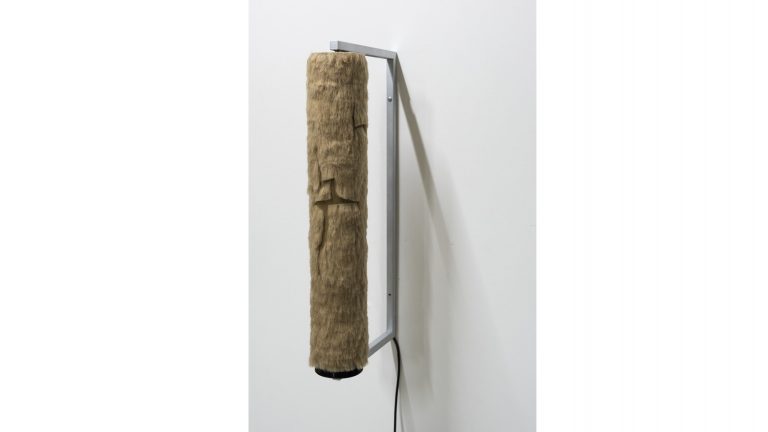In the series Blue, Charlotte Walentin creates gently folded paintings that are invisibly attached to the wall. Blue 5 and Blue 6 were acquired for the Corona Collection, an initiative to support the Swedish art scene during the COVID-19 pandemic.
Simplicity of shape does not necessarily equate with simplicity of experience.
Robert Morris
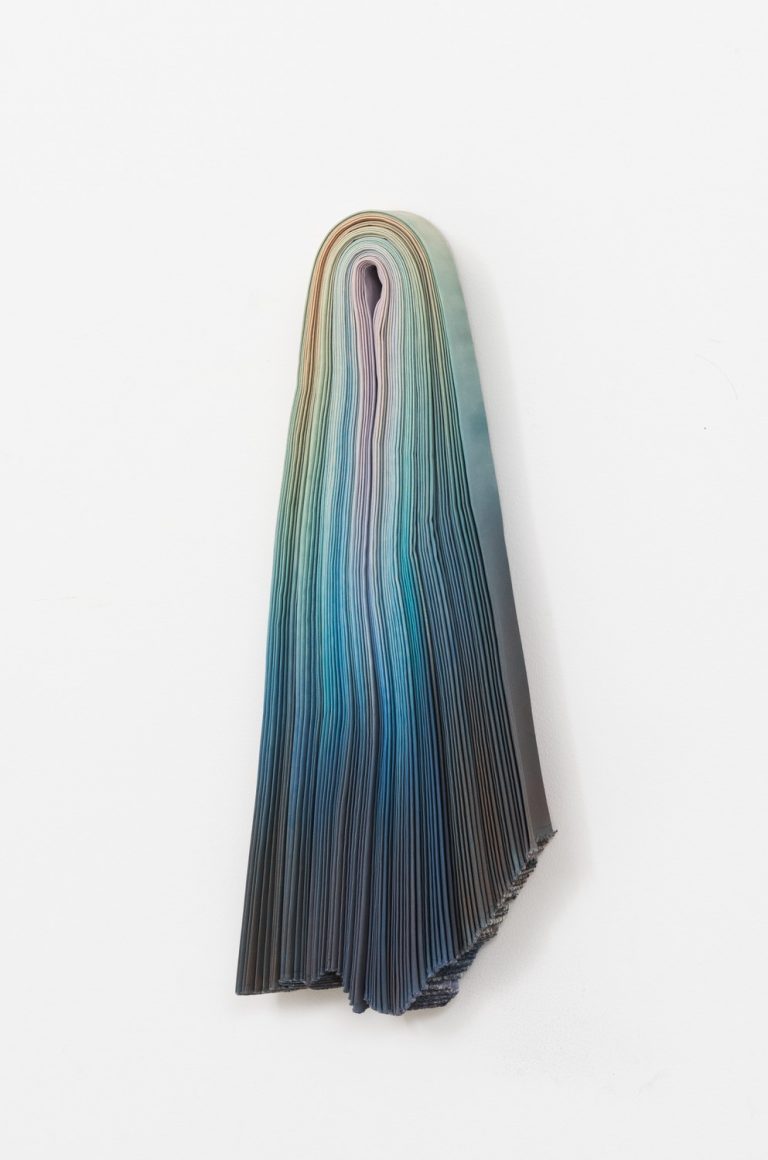
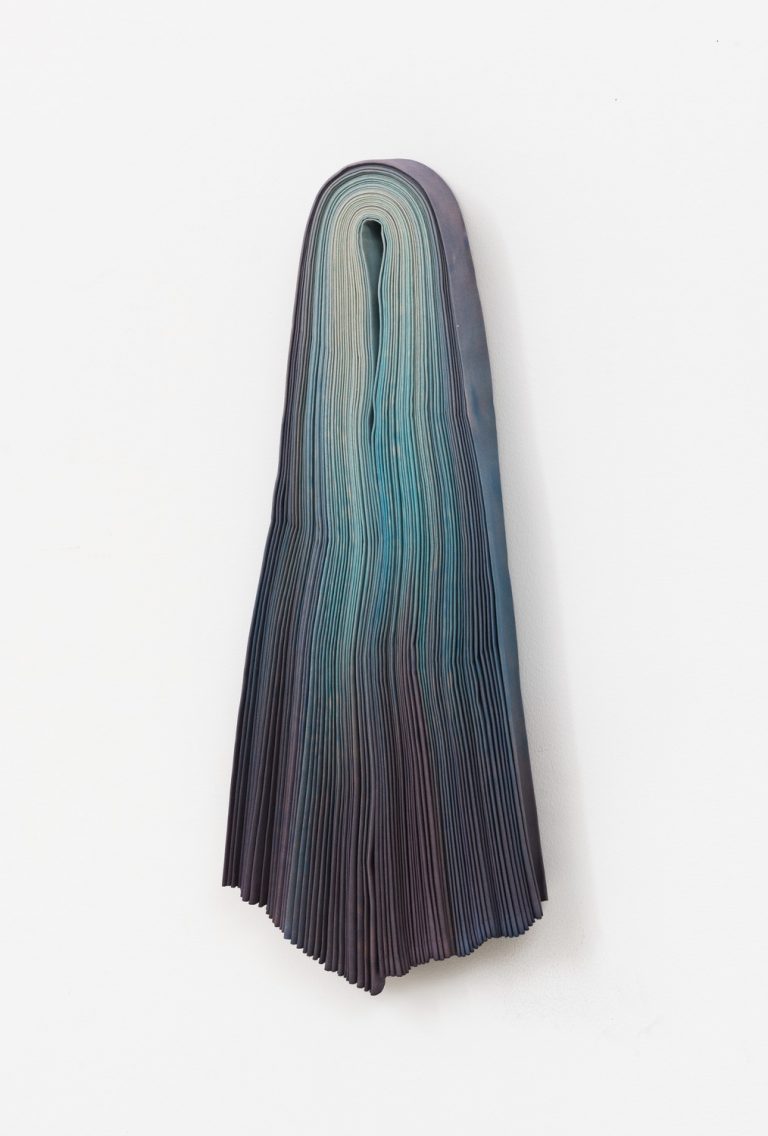
“Paint on canvas” is probably one of art history’s most common technical descriptions. It is easy to grasp; one can almost feel what it is about. At the same time, “paint on canvas” is synonymous with painting, from the Renaissance masters to Modernist avant-gardists to contemporary artists’ less ideologically charged works. Landscapes, religious allegories, portraits of historical figures, a play of abstract forms, or quite simply paint dripped on the flat surface – all of these works can be described as “paint on canvas”.
The three words cover a breathtaking range, which, historically, has presented a significant challenge for artists. The words also enable an investigation of the limits and identity of one’s art practice. The technical description becomes a laboratory for testing how artistic theories relate to the real world.
The works in Charlotte Walentin’s series Blue also adhere to the technical description “paint on canvas”, but they are not paintings on stretched canvas. Instead her “paintings” hang, gently folded, from invisible holders on the wall.
“In fact, the origin of the works has to do with gravity and the weight of the material,” Charlotte Walentin explains. “I had created some works with just one or a couple of folds and now I wanted to take it a step further in the direction of creating works with a larger object character.”
In the series Blue, Charlotte Walentin works with canvas in six-metre rolls. Setting out from the entire width of the rolls, she sprays the rolls with ink mixed with water which she then brushes into the fabric. An important factor of the process is that she will never have a complete overview of the canvas. She rolls it out, sprays it, brushes it, and folds it, piece by piece.
“It stimulates me not to have a total overview,” Charlotte Walentin says. “For me, the works are as much about what I see as what I don’t see. Often things occur during the process, things I didn’t anticipate.”
She garners inspiration from various sources, including post-minimalism and artists such as the American Robert Morris, whose works of folded felt have the same restful character as those of Charlotte Walentin. But that’s as far as the analogy goes.
“I have always been fascinated by the weight as well as the silence of Morris’s felt works,” Charlotte Walentin says. “I wanted to enter into a dialogue with these works and see what would happen if you introduce a more fluid element such as paint into the equation. The process becomes rhythmical, it pendulates between the chaotic, when the ink runs, and the controlled, when I fold the canvas.”
Charlotte Walentin’s works may appear simple, but they gain in depth by small, repetitive dislocations that give rise to something new, something different.
“By not showing everything, I have to dispense with some things,” Charlotte Walentin says. “There is value in the humility that such limitations entail.”
Artist biography Charlotte Walentin
Charlotte Walentin lives and works in Malmö, where she received her education at Art Academy Malmö. She has exhibited at, among others, Ystad Art Museum, Lunds konsthall and Malmö Art Museum.
